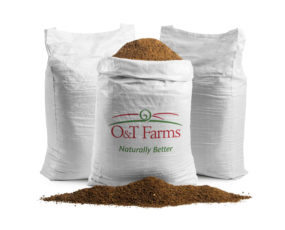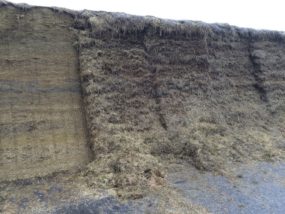Although the 2024 harvest is now over, the Canadian agricultural industry will continue to deal with ongoing challenges of mycotoxins. Mycotoxins, naturally occurring chemical toxins produced by certain moulds, have been linked to a range of issues in farm animals.
Studies indicate that mycotoxins can reduce feed intake, alter rumen function, damage gut integrity, lower immune response, lead to poor reproductive performance and alter milk production or quality.
The cumulative impact of these challenges poses a substantial economic burden on producers. Recognizing and addressing these hidden threats is crucial for maintaining animal health and optimizing production.
To address the challenges associated with mycotoxins, proactive management is key. One step in addressing mycotoxin risk is to know your mycotoxin risk. Using insights from the 2024 Canadian Harvest Analysis, producers and nutritionists can increase their knowledge, thereby proactively targeting particular feedstuffs, farms or regions that need additional mycotoxin management support.
We tested over 1,500 new-crop grain and forage samples across Canada from July to December 2024. Three fusarium toxins, including deoxynivalenol (DON), T2-HT2 toxins and zearalenone (ZEA), were the focus of analysis as they typically present some of the highest occurrences and risk in Canada. Overall, results show that all commodities have potential for mycotoxin contamination, although forages and corn products may often have higher risk.
In conjunction with individual mycotoxin results, this survey also reported total mycotoxin risk that a cow may be exposed to given mixtures of mycotoxins together. Significant risks arise from combinations of two or more mycotoxins. While individual mycotoxins may be considered low-risk, their cumulative impact can result in severe health issues. To understand total risk to the animal, we utilized the Alltech Risk Equivalent Quantity (REQ) metric. The REQ value provides an estimate of total mycotoxin risk given the mixture of mycotoxins present, allowing producers to make more informed decisions about mycotoxin risk and management.
Key results by feedstuff
Mycotoxin risk can vary greatly by region and feedstuff type. It is important to understand the potential mycotoxin risk in your locally grown feedstuffs, as well as the challenge level in commodities transported from other growing areas or provinces.
Corn silage
Across Canada, corn silage continues to be a higher-risk commodity, similar to previous years. Although mycotoxin type and content vary by region, fusarium mycotoxins remain a constant challenge. In British Columbia, T2-HT2 was most frequently detected and provided more risk, while ZEA tended to be most prevalent in other provinces. Although slightly less prevalent, DON continued to be a mycotoxin of concern due to frequent detection and potential for higher-risk contamination levels.

Corn grain
Corn assessed in the harvest analysis showed increasing risk from west to east, with highest risk in grain samples from Quebec. Although the detection of mycotoxins was lower than in silage, high concentrations were detected in some areas.
Wheat and barley
Samples of 2024 Canadian barley and wheat continue to show that these grains have lower risk for mycotoxins than corn, although an occasional high-risk contamination cannot be ruled out. Average mycotoxin levels were higher in Ontario than the Prairies. Barley was a higher-risk commodity than wheat this year.

Keeping an eye on the 2025 growing season
Looking forward to 2025, we cannot say yet what the mycotoxin risk will be in Canada. Although yearly variations do occur by feedstuff and province, it is almost guaranteed that there will be some level of mycotoxin challenge experienced on-farm. Even though weather conditions during growing and harvest often play the greatest role in mycotoxin occurrence, type and concentration, there are some management techniques that can be implemented to moderate the risk:
- Harvest silage at proper dry matter (34 to 37 DM), depending on storage type.
- Plant corn heat units to match the average temperature by location to reduce late-season blight.
- Accurate planting density by plant variety is critical.
- Use defensive corn varieties in low-lying areas and/or areas of heavy dew or fog.
- Fungicides do not guarantee mycotoxin reduction; pay attention to class, type and application timing, all of which are important.
- Rotate crops if possible.
- Monitor weather conditions and crop stressors (weather, insects, etc.).
- Keep in mind that late-season stress can dramatically increase mycotoxin concentration.
- Avoid feeding visibly mouldy grains for forages.
- Test and monitor regularly to track changes in mycotoxin risk.
- Monitor cow signals when changing feed sources.
Summary
Mycotoxins are a constant challenge for the dairy industry, with potential to influence farm productivity and profitability. Even seemingly harmless levels of mycotoxins can have detrimental effects on animal health when they are consumed over time. Furthermore, the combination of multiple mycotoxins together increases the total risk to the animal. As we move forward, proactive monitoring and implementing targeted strategies remain crucial for safeguarding animal health and optimizing productivity.
For a deeper dive into results by province, view a copy of the harvest analysis report online.










